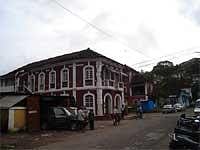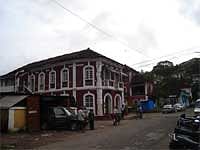

"We have been lobbying hard to save these buildings but many a time we can't help. Without legal protection bulldozers raze them down in no time," said Prajal Sakhardande, a historian and member of Goa Heritage Action Group (GHAG). "There are around 1,000 heritage monuments in Goa and these include several buildings in Panaji."
GHAG has listed these buildings in association with the Corporation of City of Panaji (CCP), but in the absence of legal cover to these structures, it is difficult for the civic body to stop the demolitions. "They have to be notified to be saved from demolition. We are trying our level best to convince people not to raze heritage structures, but legally we can't stop them if documents are in order," city Mayor Caroline Po said.
Situated on the banks of Mandovi river, Panaji has some of the best architectural wonders in Goa, a former Portuguese colony. A few quaint corners like Fountainhas have always been a big draw for tourists and film shootings. Some of the buildings in Fountainhas, an old residential area, are over 150-year-old and stand tall as a symbol of a bygone era in Goa's rich history.
"The structures, which are over 100 years, are listed as heritage sites and enjoy special protection under the local law," Sakhardande said. However, unless these structures are notified by the Government, they can be demolished, heritage activists pointed out.
"A lot of people come to see and feel the culture of the place. They want to feel a bit of history," Ajit Sukhija, owner of three heritage properties, said. Sukhija has converted his ancestral house dating back to 1880 into a heritage hotel, Panjim Inn, located in Fountainhas. "It was a traditional Catholic family house that has been turned into a hotel keeping intact its value."
Sukhija has also purchased an old Hindu house and converted it into a heritage property. "Of the total clients, 80 per cent are foreigners," he said, adding most visitors are from the UK, Germany, France, Australia and Italy, who are left spellbound with the legacy of this place.
The area also houses St Sebastian Chapel, which was built in 1818. Heritage activists also had to fight a long battle to save a building, that once housed Asia's first medical college and was to be converted into a mall.